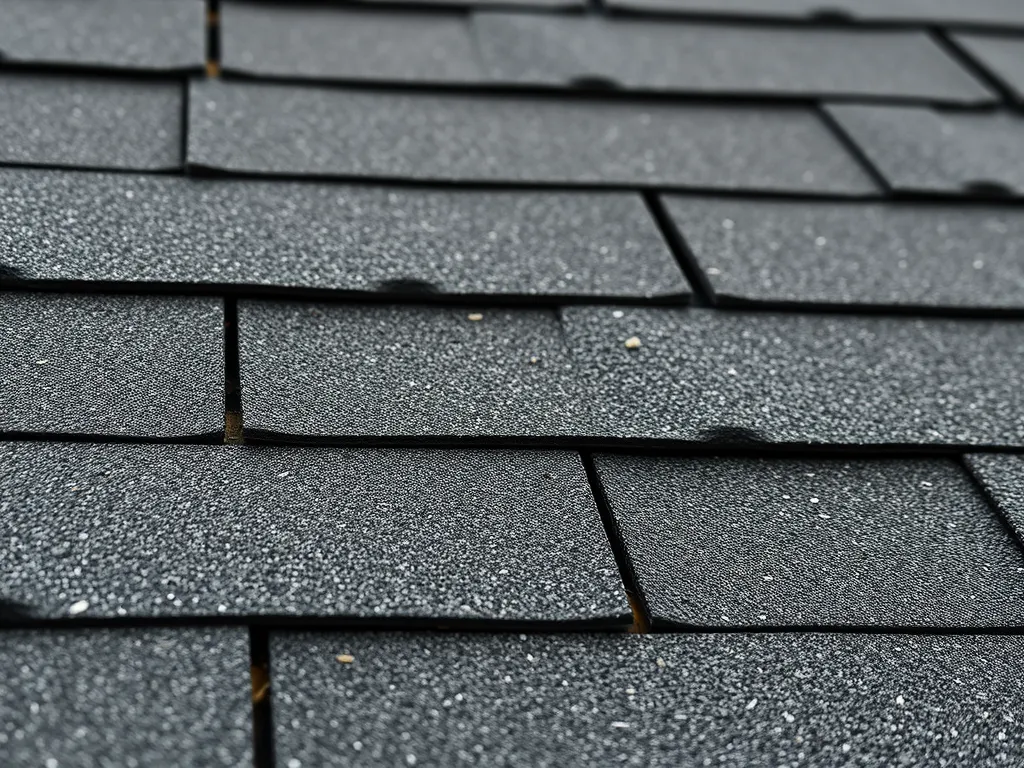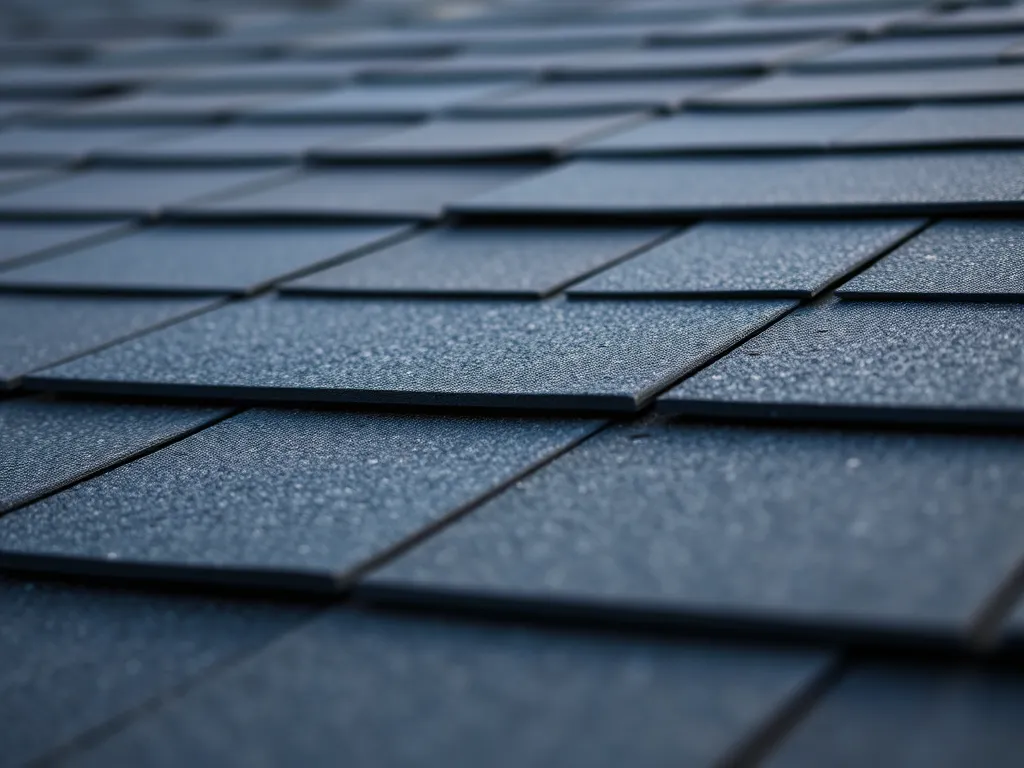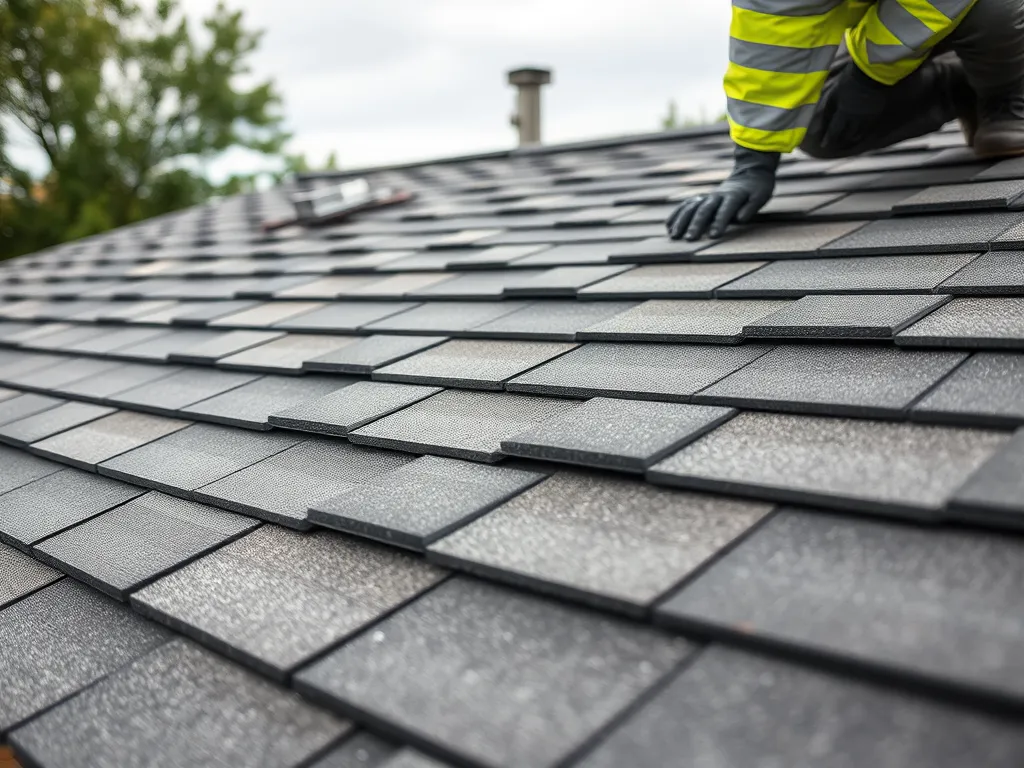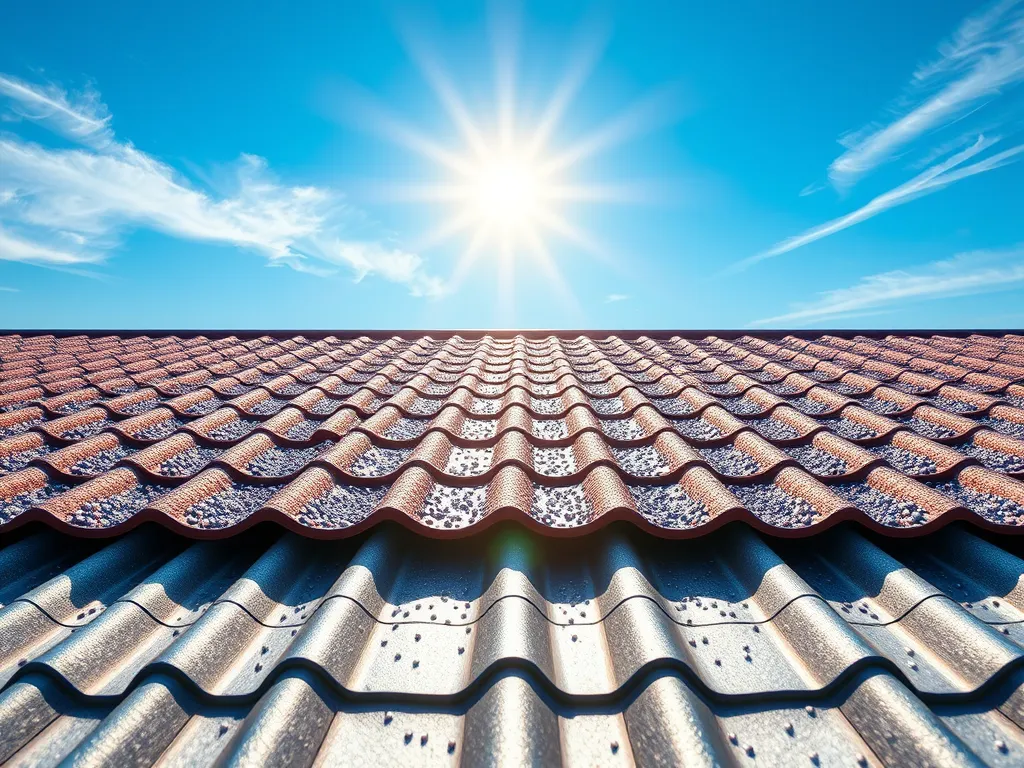Common Issues With Asphalt Roofs and Solutions
Published on: October 19, 2025 | Last Updated: April 14, 2025
Written By: George Voss
Asphalt roofs face five main problems: shingles tearing off in wind, granules washing away, edges curling up, leaks around flashing, and surface blistering. These issues come from weather damage, poor installation, or aging materials. Fixes range from DIY repairs like sealing cracks with asphalt cement ($8-$15 per tube) to professional replacements costing $5-$12 per square foot. Regular inspections every 3-5 years can prevent 80% of major roof failures.
This article shows how to spot early warning signs like missing granules in gutters or dark streaks from algae. You’ll learn to secure loose shingles with roofing nails, redirect water flow to reduce erosion, and choose between 3-tab vs. architectural shingles for repairs. We break down repair costs by damage type, compare temporary patches vs. full replacements, and share tips to add 5-10 years to your roof’s lifespan.
Contents
- Introduction to Asphalt Roof Challenges
- Most Common Damage to Asphalt Shingles
- Common Asphalt Roof Problems and Solutions
- Life Expectancy Of Asphalt Roofs
- Essential Asphalt Roof Maintenance
- Asphalt Roof Replacement Process
- Cost Considerations for Repairs
- Environmental Impact Of Asphalt Roofing
- Frequently Asked Questions (FAQs)
- Closing Thoughts
- Additional Resources for You:
Introduction to Asphalt Roof Challenges
Asphalt roofs dominate 80% of U.S. homes due to affordability and ease of installation. Yet these systems face asphalt roofing problems from day one. Heat cycles, moisture intrusion, and physical wear attack shingles at multiple points. Even top-grade 50-year laminated shingles degrade faster in extreme climates.
Three core factors drive asphalt shingles issues: material quality, installation errors, and environmental stress. Lower-tier 3-tab shingles split 3x faster than architectural-grade products in hail zones. Poor nailing patterns during installation create immediate weak points. Combined with UV radiation and temperature swings, these variables accelerate asphalt roof repair problems.
Left unchecked, minor asphalt roof leaks evolve into structural rot within 12-18 months. Granule loss exceeding 25% coverage signals imminent water damage. Curling shingles lift at edges, creating wind tunnels that trigger blow-offs during 50+ mph storms. Proactive identification of asphalt roofing defects cuts long-term repair costs by 40-60%.
Next, we break down the five most frequent asphalt roof issues and proven fixes to protect your investment.
Most Common Damage to Asphalt Shingles
Asphalt roofs face daily battles with natural forces and human factors. Common problems with asphalt roofs start with visible harm to shingles: cracks, splits, missing tabs, or bald spots lacking protective granules. Roofing pros link 80% of asphalt shingle issues to two main culprits.
Primary Causes Of Asphalt Shingle Damage
Pinpointing why shingles fail informs lasting solutions. Two factors account for most asphalt roofing defects—one natural, one man-made.
Weather Impact
UV radiation breaks down asphalt binders at 140°F+, making shingles brittle. Thermal shock from rapid temp swings (+40°F/hour) causes splitting. Hail >1″ strips granules at 50+ mph, leaving roofs vulnerable. Annual wind gusts above 60 mph lift poorly sealed shingles, starting at $400 per 10’x10’ repair zone.
Faulty Installation Methods
Nails driven too deep crush shingle mats; under-driven nails pull loose. Gaps in starter courses invite wind uplift. Missing ice/water barriers at roofs’ bottom 3’ cause 23% of leaks. Fixing installation flaws costs $5-$8 per sq.ft.—doubling labor vs. doing it right initially.
Catching warning signs early stops minor asphalt shingle issues from becoming major roof failures. Up next: fixing widespread asphalt roofing problems with proven tactics.

Common Asphalt Roof Problems and Solutions
Asphalt roofs face multiple challenges over time. Let’s break down frequent issues and proven fixes.
1. Asphalt Shingle Blow-offs
High winds tear shingles from roofs, often due to aged sealant or incorrect nailing. Check for lifted edges after storms.
Solution: Secure Loose Shingles with Roof Cement
Lift the affected shingle and apply ASTM D4586-rated roof cement beneath. Press firmly and add 1.5″ galvanized roofing nails for hold.
Solution: Reinforce Perimeter Edges
Install ice-and-water shield along eaves. Use 6d ring-shank nails spaced 6″ apart for wind-rated performance.
2. Granule Loss on Asphalt Shingles
Bald spots signal aging or poor drainage. Check gutters for black sand buildup.
Solution: Address Drainage Issues
Clear clogged downspouts and add splash guards. Ensure 2% slope around roof edges.
Solution: Replace Severely Degraded Shingles
Swap shingles showing >40% granule loss. Match existing shingle type (3-tab/architectural) for consistency.
3. Curling or Buckling Asphalt Shingles
Heat buildup or moisture causes edges to warp. Inspect attic airflow.
Solution: Improve Attic Ventilation
Add ridge vents (1 sq.ft per 150 sq.ft attic space) and soffit vents. Keep temps below 130°F.
Solution: Apply Adhesive for Minor Curling
Use thermoplastic sealant on lifted corners. Weight with bricks for 24 hours.
4. Asphalt Roof Leaks
Water stains indicate breaches at flashing or cracked shingles.
Solution: Seal Flashing Gaps
Apply butyl tape around vent pipes and chimneys. Replace corroded step flashing with 26-gauge galvanized steel.
Solution: Patch Damaged Shingles
Cut 6″ aluminum sheet to size. Slide beneath damaged area and secure with roofing cement.
5. Blistering in Asphalt Shingles
Trapped moisture creates bubbles under shingles. Common in humid climates.
Solution: Prevent Moisture Trapping During Installation
Install shingles when temps exceed 50°F. Avoid stacking bundles on wet decks.
Solution: Professional Inspection for Severe Cases
Contact roofers if blisters cover >15% of surface. Expect core sampling to check deck moisture levels.
Knowing these fixes helps homeowners act before minor issues grow. Next, we’ll examine how long asphalt roofs last under different conditions.
Also See: Asphalt Alternatives for Businesses
Life Expectancy Of Asphalt Roofs
Asphalt roofs typically last 15-30 years. This range depends on material quality, environmental stresses, and maintenance practices. Addressing common asphalt roof problems early can add 5-7 years to this timeline.
Factors Affecting Longevity
Four elements dictate how long your roof withstands asphalt shingle issues:
- Local weather patterns
- Shingle manufacturing standards
- Installation techniques
- Maintenance frequency
Climate Conditions
Heat above 90°F softens asphalt binders, accelerating granule loss. Freeze-thaw cycles in northern states create cracks that lead to leaking asphalt shingles. Coastal salt spray degrades shingle surfaces 30% faster than inland environments. Hailstorms scoring 2″ or larger on the FHWA scale often require immediate asphalt roofing leak repairs.
Shingle Quality Grades
3-tab shingles meeting ASTM D3462 standards last 15-20 years. Architectural-grade shingles with UL 2218 Class 4 impact resistance push durability to 25-30 years. Lower-grade materials below 240 lbs/square tear weight account for 62% of early asphalt roofing defects reported in NIST studies.
Regular care directly combats asphalt roof issues – which brings us to maintenance strategies that preserve structural integrity.

Essential Asphalt Roof Maintenance
Regular upkeep keeps asphalt roofs performing well beyond their expected 15-30 year lifespan. Neglected maintenance speeds up wear from weather, debris, and structural stress. Follow these core practices to combat common problems with asphalt roofs before they escalate.
Seasonal Debris Removal
Leaves, pine needles, and dirt block drainage paths, trapping moisture against shingles. This moisture breeds algae growth or rots underlying decking. Use roof-rated tools like telescoping rakes or soft-bristled brooms for clearing—never pressure washers exceeding 1,200 PSI, which strip protective granules. Focus on valleys and low slopes where debris collects.
Gutter and Downspout Cleaning
Clogged gutters force water under shingles, causing leaks or ice dams in freezing climates. Clear leaves twice yearly—spring and fall—using gutter scoops or shop vacuums. Install micro-mesh guards costing $1-$7 per linear foot to cut future buildup. Ensure downspouts direct water at least 5 feet from the roof’s edge to prevent soil erosion near the foundation.
Tree Limb Management
Overhanging branches scrape granules off shingles during winds over 50 mph. Trim limbs within 6-10 feet of the roof to eliminate physical contact. Remove deadwood exceeding 2 inches in diameter, which can puncture shingles if fallen. Prune trees yearly to reduce leaf drop and rodent pathways onto the roof.
Professional Roof Inspections
Certified roofers spot hidden issues like cracked flashing or nail pops during biannual checks. Thermal imaging scans ($150-$500) detect moisture under shingles, while core samples reveal deck rot. Technicians follow NRCA guidelines, checking for granule loss exceeding 20%—a sign shingles need replacement. Early intervention lowers repair costs by up to 60% compared to deferred fixes.
While diligent upkeep extends roof life, severe storm damage or aging might require more extensive measures. Let’s explore when replacement becomes the practical choice.
Asphalt Roof Replacement Process
When repairs no longer address asphalt roofing problems like widespread leaks or curling, full replacement becomes necessary. Proper installation prevents future asphalt shingle issues and extends roof life by 20-30 years. Here’s how professionals tackle the job:
Step 1: Old Roof Removal
Crews tear off existing shingles using roofing shovels, exposing the deck. They haul away debris (1-3 tons for average homes) and check for hidden asphalt roof leaks. Complete removal prevents uneven surfaces that cause new shingles to buckle.
Step 2: Deck Inspection
Contractors probe the wooden deck for rot using screwdrivers or moisture meters. Soft spots indicate water damage from asphalt roofing leaks. Replacing 4’×8′ plywood sheets costs $45-$65 per panel. A solid deck prevents future asphalt shingle repair issues caused by sagging.
Step 3: Underlayment Installation
Teams roll out synthetic underlayment (30# felt or polymer-based) across the deck. Ice & water shields get applied to eaves/valleys – self-adhesive membranes prevent leaking asphalt roofs in freeze-thaw zones. Proper underlayment reduces asphalt shingle defects by 40%.
Step 4: New Shingle Application
Installers follow manufacturer specs for alignment and nailing patterns. Starter shingles secure edges against blow-offs. Architectural asphalt shingles (average $120-$150 per square) get staggered for wind resistance. Ventilation gaps (1:300 ratio) prevent heat-related asphalt roofing problems.
With the replacement complete, homeowners should next evaluate how maintenance impacts long-term costs. [Transition to next section]

Cost Considerations for Repairs
Repair expenses for asphalt roofs depend on specific damage patterns and material requirements. Two critical elements directly impact project budgets: surface wear from granule loss and shingle replacement needs.
Pricing Factors for Asphalt Roof Repairs
Labor rates ($45-$75/hour) and material costs dominate repair estimates. Roof pitch, accessibility, and regional pricing also play roles, but granular erosion and shingle failure remain primary cost drivers.
Extent of Granule Loss
Granules shield asphalt shingles from UV rays – losing 30% or more accelerates aging. Minor erosion (under 10% loss) might only require sealant applications at $0.50-$1.25 per square foot. Severe cases demand partial roof replacement, costing $350-$550 per 100 sq.ft. Watch for excessive granules in gutters, a telltale sign of advanced wear.
Number of Damaged Shingles
Individual shingle repairs average $3-$5 per unit including labor. Projects exceeding 30% damaged shingles often trigger full roof replacement recommendations. Storm-damaged roofs may show scattered failures, while heat-blistered shingles typically cluster in south-facing slopes. Always check adjoining shingles – hidden nail pops or cracks frequently accompany visible damage.
Smart repairs balance immediate costs against long-term performance. Next, explore how modern asphalt roofs contribute to environmental sustainability through material recycling and energy-saving designs.
Environmental Impact Of Asphalt Roofing
While fixing asphalt roofing problems, consider how repair choices affect the environment. The industry generates 11 million tons of shingle waste yearly – enough to fill 1.5 million dump trucks. Modern solutions tackle both performance issues and ecological concerns.
Recycling Old Shingles
Damaged shingles from asphalt roof leaks or granule loss don’t need landfills. Recycled asphalt shingles (RAS) get crushed into aggregate for road paving or mixed into new roofing materials. Contractors can process 1 ton of shingles into 1,000 sq ft of pavement material. Many states offer tax credits up to $15/ton for recycling versus $45/ton landfill fees. Look for local RAS programs when replacing degraded sections.
Energy-efficient Shingle Options
Heat-related asphalt roofing defects like blistering worsen energy bills. Cool roofing shingles with solar-reflective granules cut attic temps by 20-40°F. Products like GAF Timberline Cool Series meet ENERGY STAR® standards with 0.25+ emissivity ratings. SBS-modified shingles add flexibility (-40°F to 240°F tolerance) while maintaining reflectivity. Some utilities pay $0.20-$0.80/sq ft rebates for installations.
Smart material choices reduce asphalt roof repair issues while lowering home energy use. Next, explore answers to frequent queries about maintaining your roof’s performance.

Frequently Asked Questions (FAQs)
What is the Most Common Damage to Asphalt Shingles?
The most common damage to asphalt shingles includes blow-offs caused by high winds, granule loss due to aging, curling or buckling from heat and moisture buildup, leaks around flashing, and blistering from trapped moisture.
How Long Does an Average Asphalt Roof Last?
An average asphalt roof lasts between 15 to 30 years, depending on various factors like material quality, installation, maintenance, and local climate conditions.
Can I Perform Asphalt Roof Repairs Myself?
Yes, many minor repairs can be performed by homeowners, such as securing loose shingles with roofing cement or clearing debris. However, for more complex issues like serious leaks or structural damage, it is advisable to hire a professional. Safety is also a concern, so proper precautions should be taken.
When is Full Roof Replacement Necessary?
Full roof replacement might be necessary when there is extensive damage such as widespread leaks, significant granule loss, curling or buckling of a large number of shingles, or if more than 30% of the roofing surface needs repair. If the structural integrity of the decking is compromised due to water damage, replacement is typically required.
Closing Thoughts
Addressing common issues with asphalt roofs is vital for extending their life and maintaining their effectiveness. From blow-offs to blistering, each problem has practical solutions. Proper maintenance and timely repairs not only prevent costly replacements but also enhance the roof’s durability.
To keep your roof in excellent condition, consider seasonal inspections and debris removal. This proactive approach helps mitigate significant issues before they escalate. Always consult with professionals for extensive repairs or replacements to ensure quality and safety.
For more information on asphalt roofing and tools to assist with your projects, check out Asphalt Calculator USA.
Additional Resources for You:
- Kett, I. (1999). Asphalt Materials and Mix Design Manual. Oxford: Elsevier Science.
- Common Problems With Asphalt Roofing
- Common Problems With Roof Shingles | Driftwood Builders Roofing
- Common Problems with an Asphalt Roof | RJ Evans Roofing
- Asphalt Shingle Problems, Signs of Trouble | Renoteck


